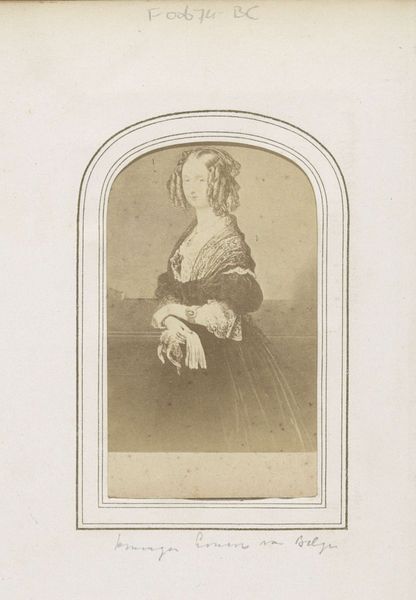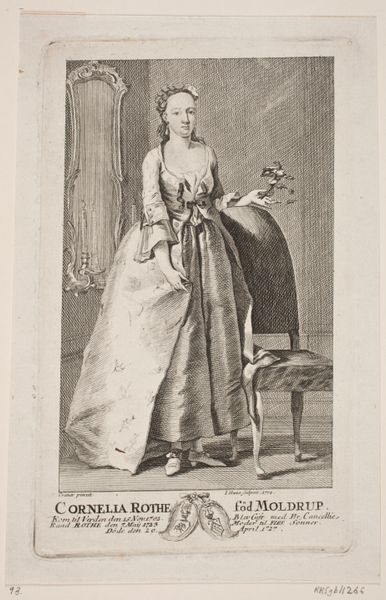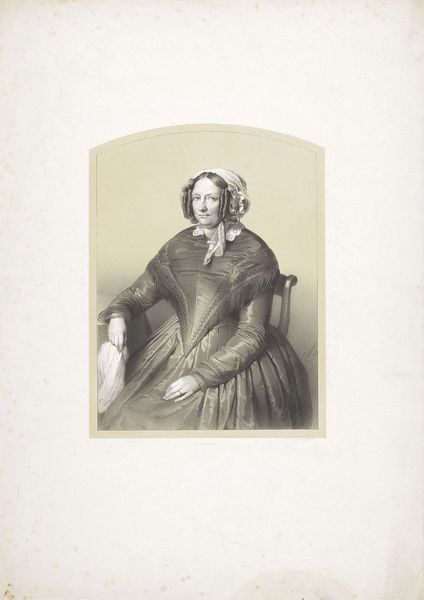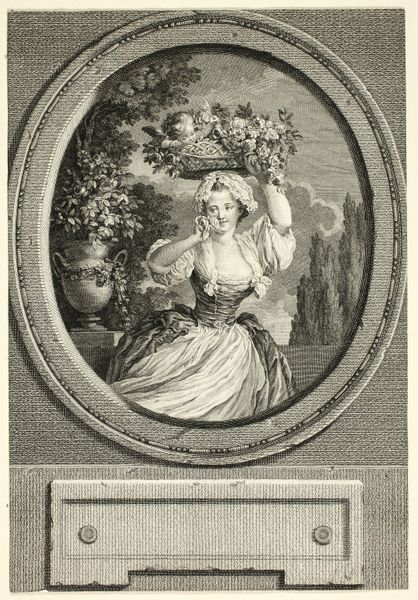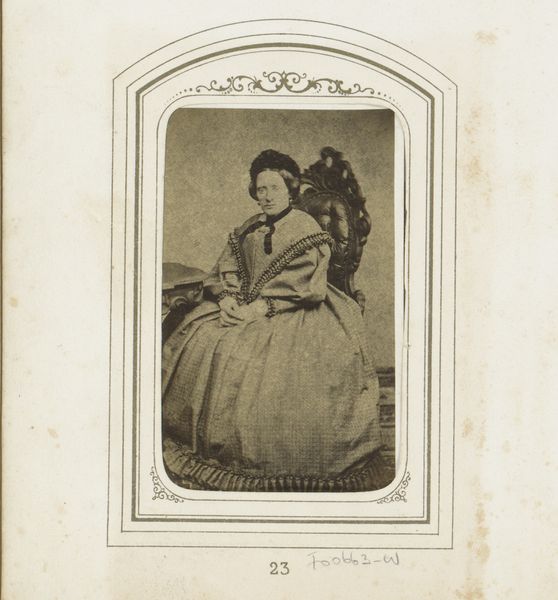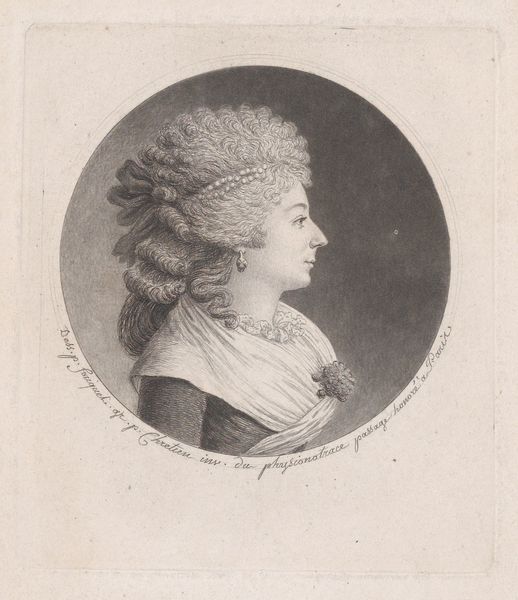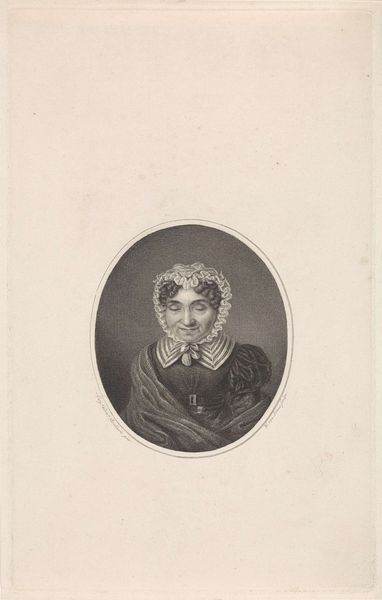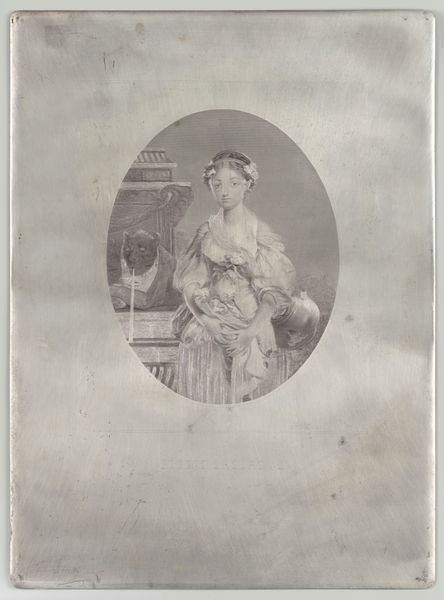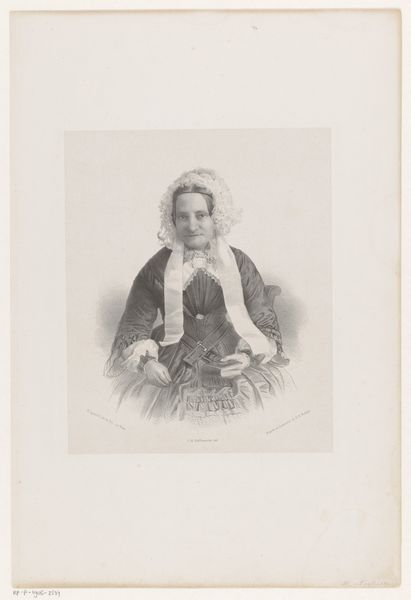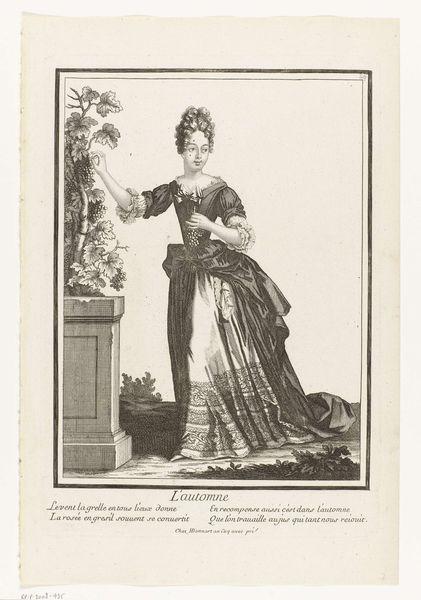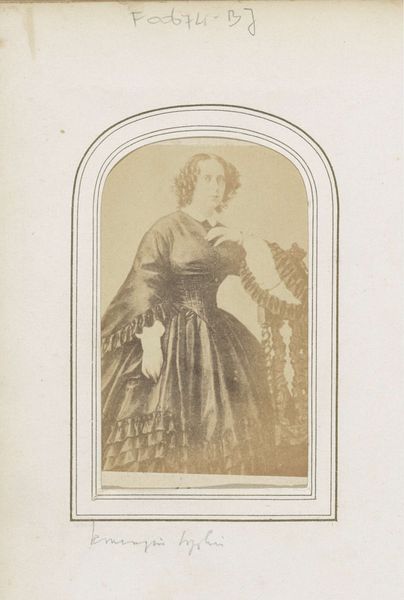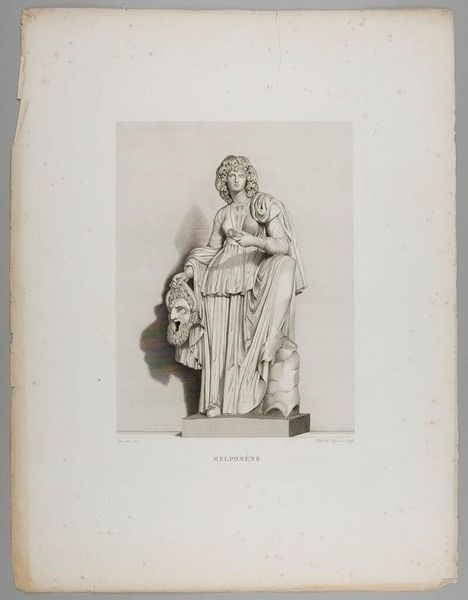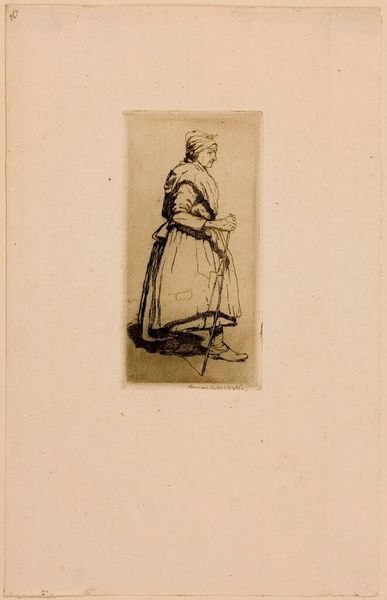
Dimensions: height 105 mm, width 73 mm
Copyright: Rijks Museum: Open Domain
This portrait of Marie-Adelaide Hoigne was made using early photographic processes. The photograph itself is small, and that immediately indicates its special status as an object. It is a Carte-de-Visite, a calling card, a modern invention that arose in the 1850s due to industrial advancements and the burgeoning culture of photography. The tonal range of the image results from chemical reactions, and lengthy exposure times, a labor of both sitter and photographer. Notice the sitter’s stillness, which would have been essential to achieving a clear image. The very act of making this photograph, therefore, imbued the artwork with social significance, suggesting status, wealth, and access. The Carte-de-Visite enabled the proliferation of portraiture across social classes, democratizing access to the technology of image-making. Consider how this object, born of both chemistry and capitalism, has been instrumental in defining how we record and remember each other. The value lies not just in the image, but also in the material, the making, and the social context that produced it.
Comments
No comments
Be the first to comment and join the conversation on the ultimate creative platform.
